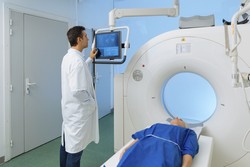Radiotherapy outcome modelled at the microscale
Clinical radiotherapy for cancer has seen dramatic improvements in recent years, driven by developments in imaging and delivery techniques. However, radiotherapy planning tools focus purely on dose, without taking into account the physical and biological responses of the treatment. To address this, scientists of the EU-funded RADRESPRO project proposed to develop a multi-scale model framework to bridge the gap between current macroscopic radiotherapy planning and in-depth understanding on the microscale. The rationale is to support future personalised radiotherapy approaches tailored to the needs and radiosensitivity of individual patients. Researchers built a computational framework to model responses to radiation on the single-cell level. This model predicted the yield of mutations, chromosome aberrations and cell survival for a range of radiation exposure conditions and types of ionising radiation. Special focus was given to the characterisation of fundamental cellular responses such as DNA repair, cell cycling and cell death following exposure to ionising radiation. Validation across several hundred different cell lines and experimental conditions demonstrated good predictive power based on cellular, genetic and phenotypic characteristics. Simply on the basis of species of origin and genes associated with cell cycle and DNA repair defects, the model accurately explained up to 80 % of the variation in sensitivity between different cell lines. The model was expanded to describe the impact of different types of radiation (X-rays, protons and carbon ions) by incorporating physical models of energy deposition on the subcellular scale. This allowed scientists to characterise the increased biological effectiveness of more densely ionising radiation. Furthermore, the incorporation of a temporal component to the model allowed evaluation of fractionated or protracted radiation exposures with emphasis on cellular stress and survival. Overall, the model demonstrated a widely applicable predictive power and capacity for integration into a clinical planning workflow. Being able to measure the sensitivity and relative biological effectiveness of radiation on a patient-specific basis is expected to significantly improve treatment outcome.







